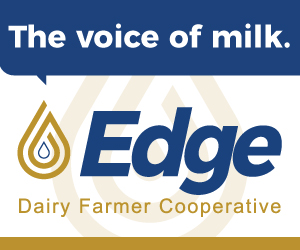This is the second episode of a five-part podcast series exploring a wide range of issues in the dairy industry. In this episode, farm broadcasters Spencer Chase and Ben Nuelle report on the various changes in dairy policy in recent memory. The transcript can be read below, and the podcast can be heard here or on your favorite podcast app.
To hear the first episode, click here.
There’s a saying in Washington, D.C.
It has to do with assessing the costs of legislation and government efforts across defense, agriculture, transportation, basically any effort you can think of.
A couple billion here, a couple billion there, all the sudden you’re talking about real money.
The 2018 farm bill was $867 billion worth of real money.
As is typically the case, nutrition programs will take up most of the farm bill pie chart. At about 76% of the bill’s total spending, that pie chart looks less like a division of expenditures and more like a game of Pac-Man.
When the Congressional Budget Office combined expected nutrition spending with the mandatory outlays the farm bill authorized … These include programs for crop insurance, conservation, and commodity support. Those four programs ate up about 99% of the farm bill’s funding.
The farm bill is also where federal dairy programs get their funding. And the behind-the-scenes negotiations of recent farm bills have led to some big changes in the nation’s dairy policy. But the fact that dairy program spending is buried somewhere in one of the smaller pieces of the farm bill pie chart doesn’t mean the negotiations over it are any less ruthless.
Even as farm policy casts a shrinking shadow in Washington, dairy policy is a whole different animal.
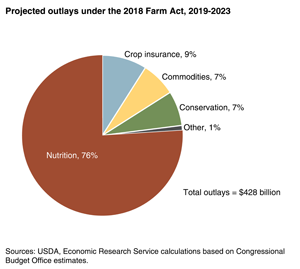
USDA breakdown of farm bill spending (The bill's total outlays are $428 billion over five years and $867 billion over 10 years.)
Some of that is because of how dairy farmers get their money. Some of that is because many members of Congress lack a good understanding of the industry. And some of that is because a few members understand the industry pretty well. Off Capitol Hill, dairy groups say they’re playing nice. On the Hill, well, it’s complicated.
Let’s explore in Agri-Pulse Deep Dive on Dairy Episode Two: Balancing Act.
Farm policy is complex.
It’s not impossible to understand and doesn’t require some kind of secret decoder ring to interpret, but it’s complex. It’s less partisan and more regional. Passing legislation represents a delicate mix of urban and rural support. Like anything else on Capitol Hill, it can get sidelined by unrelated issues that take up Washington’s legislative oxygen. It’s complex.
Dairy policy is really complex.
Jim Mulhern is the CEO of the National Milk Producers Federation. He’s a veteran of decades of dairy policy battles, and over the years, he’s noticed a shift in how the government has approached dairy.
“When I came into the industry in the early 1980s, for example, the cost of the dairy price support program at that time was in the neighborhood of $2 billion a year the federal government was spending to buy dairy products that were in surplus and put them into storage. Whether it was cheese into refrigerated cold storage or butter into frozen storage, that was — we had a lot of product being purchased by the government to support milk prices at the farm level. The government has moved completely away from that where no longer are they intervening in the market to buy product and that’s a good thing. It wasn’t helpful to have that product in storage because when the price would begin to rise, then the government would sell the product back into the commercial market it so it put a ceiling on prices.
Now, the government takes a more measured approach, offering a safety net to dairy producers.
Collin Peterson first came to Congress in 1991. He’s a Democrat who represents a rural district, something that was much more common when he came to Washington than it is today.
When he goes home to talk to producers in his district, dairy is often a topic of conversation. And over the years, that conversation has changed.
“There was some price problems at that point. At the time, they wanted a government program to stabilize the prices at a higher level and so forth. I don’t think it was supply management at that point, I just can’t remember. But I think finally, people have come around to understanding that the government is not going to do this all by themselves. So we have a program now they can opt into, they pay something for it, they’ve got some flexibility in terms of how much is covered and what it costs and how many years and all that sort of thing and it seems to be working for the smaller producers and the larger producers have now this crop insurance option that they’re starting to pick up on and the bigger producers have been using the futures market for a long time.”
That crop insurance option Peterson mentioned is actually called Dairy Revenue Protection. It’s an option available through private crop insurance agents and covers 80-95% of a producer’s expected quarterly revenue in 5% increments — 80, 85, 90 and 95%. If actual revenue comes in below the insured revenue guarantee, there just might be an indemnity check in the mail.
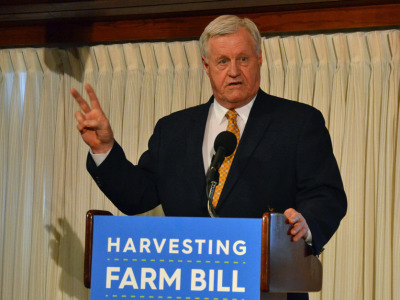
House Ag Committee Chair Collin Peterson, D-Minn.
It’s another option in the safety net basket the government currently offers to producers. But that basket has seen some big changes recently.
In the last decade, producers had to navigate the complexities of three different programs and a budget deal after one of those programs received some … less than favorable reviews. There’s also the matter of trying to navigate the trade winds and tariff battles. And what in the heck is a milk marketing order? We’ll dive into those questions in some future episodes; for now, let’s talk about those safety net programs.
Farmers entered the decade under the Milk Income Loss Contract program, which was authorized under the 2008 farm bill and extended in a tax and spending deal that cleared Congress on New Year’s Eve in 2012. That program offered payments to producers when prices fell below a specified level.
In the 2014 farm bill, MILC gave way to MPP, the Margin Protection Program. That program offered payments when the difference between the all milk price and the average feed cost — the margin that was being protected in the program — went below a certain threshold. Producers could pick their level of coverage — say $7 dollars per hundredweight — and receive a payment if the margin went below that level. It was a voluntary program; producers paid premiums based on their production history and their level of coverage, but didn’t cash in unless things went South.
But it didn’t work. And dairy country let Capitol Hill hear about it.
To hear Mulhern tell it, the program never really had a shot.
"It really was inadequate to start with because of some changes that had been made in the formula, the feed cost formula when it was in consideration during the 2014 farm bill debate, largely driven by budget reasons. The Congressional Budget Office said the formula had been proposed by the National Milk Producers Federation. They said it was going to increase the cost beyond what was affordable in the budget baseline. That cut in the formula took about a dollar per hundredweight out of the support that MPP would provide. We had $8 coverage under MPP. It was really effectively $7 coverage and that was below the cost of production for many many producers."
People on Capitol Hill weren’t happy with the final product either. At the time, Peterson was the ranking member on the House Agriculture Committee. Since then, Democrats have taken the majority in the House, and now he’s the one holding the gavel.
According to the 2017 Ag Census, his congressional district is the sixth-highest in market value of ag products sold and the ninth-highest district in terms of milk sold.
He has to know about dairy, and he was in on some of the key MPP conversations as the program was drafted.
The feed costs that were calculated at that time were wrong because we had these high prices. And a year later, they were $12, a year later they were $8. So we were looking at $18.50, $19 milk guaranteed at the time we did it, and by the time we implemented it was $13, so at that level, people can’t make money, so they didn’t buy it. It didn’t work.
Let’s break down those numbers a little bit.
USDA estimates 2018 total feed costs per hundredweight for a 50-cow dairy came in at about $12 dollars and 58 cents. For a dairy between 500 and 1,000 cows, that cost drops to 9 dollars and 38 cents. Keep in mind, that’s just feed costs. There’s still labor, power, taxes, veterinary care, and other factors that come into play.
We’ll get a little deeper on the dollars and cents in next week’s episode, but those figures illustrate a point: there’s a push to keep smaller producers in business, and it does not always hit the mark.
"I think the government has a proper role here to prop up the smaller producers. I’ve talked to large producers around the country that can make milk for $14 because of economies of scale and so forth, and my small producers need $17.50."
MPP was unpopular in dairy country, so much so that language in a 2018 budget deal eliminated premiums at lower coverage levels and sharply reduced the premiums of higher levels. It also sent lawmakers back to the drawing board. What they came up with is … essentially the same program with a different name and different numbers: The Dairy Margin Coverage program.
“We finally got it right this time in the 2018 farm bill and that is going to very important for producers to provide assistance especially for small and medium sized producers when we get into those low price situations that I was referring to earlier. The new margin coverage allowing producers to have the coverage at the $9.50 per hundredweight level as the maximum level they can buy, that is going to be very very helpful and frankly I think that is a change in dairy policy on the economics side that has been I think as you look over this last 30 to 40 years, we’re in a much better place today for an industry to be able to produce for the marketplace but for the federal government to provide that safety net that will be very helpful for producers when you get into those price troughs that we hit from time to time."

Jim Mulhern, NMPF
Some 12,866 producers signed up for DMC 2020 out of a total of 27,237 producers with established production history. The total number of producers across the country is 37,468. This number is nearly half the amount of producers that signed up in 2019 but that’s because milk prices are much higher now. Some 23,336 producers signed up for DMC coverage in 2019. Mulhern argues there may be producers who didn’t sign up for DMC who regret that decision.
Mulhern: “You learn from past mistakes. Farmers make decisions like government makes policy — a lot of times look in the review mirror based on the past experience, not always looking forward. This is a new program relatively for dairy as we get into these risk management programs so time will tell how it is going to work. I think people made a rational decision for themselves on whether to signup for five years or an annual basis."
Chase: How do you anticipate that signup fluctuation is going to impact conversations on whatever policy might come from a potential 2022, 2023 farm bill?
Mulhern: I think we’ve got it about right now. I think this is a very strong program, in the Dairy Margin Coverage program that has been set up. As we look at it today and obviously we can’t see the future, as we look at it today, I think we have the framework for a strong and effective dairy policy for the future. As I said, people will learn how to use the program. It is relatively new. The first four years experience with it under MPP people found it wasn’t useful, it wasn’t worthwhile, it wasn’t a good expenditure of money for a program that wasn’t going to provide any support. We fixed that in this version. I think you are going to see a good uptake of the program going forward and I think it provides the framework for future dairy policy moving forward. I think we got it about right this time.
Peterson has a different theory.
Peterson: Part of what’s going on here is the people who have retired or gone out of business have not been calculated into this formula. So when they say it’s 75% signed up, from what I can see, the 25% that’s not signed up is not in business anymore. So we kind of hit 100% signup, but they’re using data from before it. It doesn’t exist, from what I can tell.
Chase: You think the signup was that high among active producers?
Peterson: Some places, yeah. I went to one county where they said it was … I checked this out … we found out who signed up in that county and they said it was like 75-80%. We found out it was actually 100% because people had gone out of business and they were still being counted.
Peterson declined to say just where this happened, but did note it was in his district. As we said earlier, nationwide DMC signup was about 85% in 2019, but dropped to about 47% for 2020.
This repertoire of programs now has the industry in a decent place. DMC is targeted to smaller producers. Program caps limit DMC's value to larger farms. But they now have the option to buy one of two types of insurance policies that are subsidized by USDA. There’s a policy to insure revenue and another to insure the difference between milk prices and feed costs.
You also can’t talk about dairy policy without mentioning one key figure: Pat Leahy. The Vermont Democrat has been in the Senate since 1975, the fifth-longest serving senator of all time. He’s chaired the Senate Agriculture and Judiciary committees and is currently the top Democrat on the Appropriations committee. This is totally unrelated, but he’s also had cameo appearances in several Batman movies, something that fascinates us.
Leahy is legendary for his influence on dairy policy. The 2018 budget deal we mentioned earlier? A huge priority of his. It’s well known in farm policy circles that if you want to pass a farm bill, Leahy needs to be happy with the dairy language.
Peterson doesn’t always appreciate this, but he did give us a little look at his strategy for making sure both Leahy and more budget-conscious members of Congress can both be on board.
"So what I’ve started doing — I shouldn’t say this I suppose, but I’m not sure how much longer I’ll be doing this — but what I did was I set things up in the House so that we had room to give Leahy something in the Senate so we would have more sensible policy. That’s worked pretty well." said Peterson.
We weren’t able to talk to Sen. Leahy for this podcast.
As Peterson mentioned, he’s not sure if he plans to run for reelection this year. An announcement on that note is expected basically any day now.
Leahy’s current Senate term ends in 2022.
The current farm bill runs through 2023.
Whether or not these two farm policy titans will be around for the next piece of legislation remains to be seen, but one thing’s for sure: we haven’t seen the last of major dairy policy changes. More on that after this.
Agri-Pulse Deep Dive is brought to you by Edge Dairy Farmer Cooperative — the voice of milk. Edge provides dairy farmers across the Midwest with a strong voice — the voice of milk — in Congress, with customers and within communities. Edge is an energetic, forward-thinking organization that represents all dairy farmers equally, recognizing both their differences and similarities. As one of the top dairy cooperatives based on milk volume, Edge amplifies the voice of farmers. Now, more than ever, dairy farmers need to be heard. Join us at VoiceofMilk.com.
Supply management.
Those two words can invoke quite a reaction in farm policy circles.
Mulhern noted dairy producers are always discussing what the right dairy policy looks like. But one big sticking point among producers is supply management. This is where the government, take Canada for example, controls the supply of their dairy production through import controls and pricing mechanisms. Some argue this in turn ensures farmers are profitable and consumers still have access to high quality supply without shortages and surpluses. Mid-size to larger producers tend to shy away from it where smaller producers think the system could work. Take small southern Virginia dairy producer Rhonda Ware, who I spoke to in August for example. She signed up for the DMC program but is skeptical. She would like to see other policies like supply management in place.
Ware: It’s not going to keep me in business. I mean none of these programs are going to keep us rolling. We’ve got to have — we’ve got to be able to be profitable. The first half of 2018 was profitable for no one. Perhaps dairies that are above one thousand cows. They may be able to make money at $15 but nobody 500 and below can do that. I would much rather see changes in pricing and supply management, or more exports or whatever is going to make us to where we can live and pay bills. I think we need dairies in the Southeast.
Nuelle: Are you optimistic about the dairy industry here?
Ware: No, not at all. I mean I’ve been in it since 1991 and I’ve seen two really horrible times. The highs are very short-lived and less of them all the time. I feel like the dairy industry is going just how this went, and hogs and then people are going to fuss because the dairy industry has gone that way but it seems to be the nature of agriculture in the U.S. and we are the best farmers in the world but everyone cheap food so … (laughs)
Ware says she is grateful for DMC because it helped her pay for fertilizer this year but she just wants someone to tell her how much milk she needs to produce. Producers don’t just have to get along with each other, but they have to get along with milk processors. Michael Dykes is President and CEO of the International Dairy Foods Association (IDFA). You heard from him last week talking about the way the consumer is shaping modern industry decisions. When it comes to policy decisions, he says different groups are going to have to work together, and he says they had to do just that to get the dairy industry on the same page headed into the last farm bill.
“I have watched many farm bills over the years, and I could always tell you predictably that one of the last two or three remaining issues as to why the farm bill didn’t done when everybody thought it was going to get done was because dairy was fighting about something. Dairy didn’t fight about anything in the last farm bill.”
Instead, IDFA and National Milk came to an agreement on three major priorities for the 2018 farm bill and agreed to back the changes together. From the producer's side, a fix to MPP was sorely needed. Processors needed some tweaks to the class 1 pricing system and an incentive for fluid milk purchases in federal nutrition programs.
That unity cleared the way for some of the MPP-to-DMC changes we talked about earlier. It also helped farm bill negotiators as they tried to craft a dairy policy that would work for both sides of the industry.
The agreement and unity is something Dykes says the dairy industry will have to maintain if there’s any hope for future policy gains.
“And we’re going to have to reach out to bipartisan urban/rural members of Congress. Agriculture will no longer be able to drive the bus when it comes to ag policy. Look at the House Ag Committee today and listen to Mr. Peterson talk about how he’s tried to recruit members to serve on the House Ag Committee. Inherent in all that, is we have a tremendous educational opportunity ahead of us. Cause we’re going to be talking to people who didn’t grow up on a farm. We’re going to be talking to people who don't know what happens on a farm. Even for some of those who did grow up on a farm, I tell people today, ‘if you haven’t been on a farm in the last five years, you’re out of touch with what is happening on today’s farms.’ That’s how advanced and how fast they are advancing.”
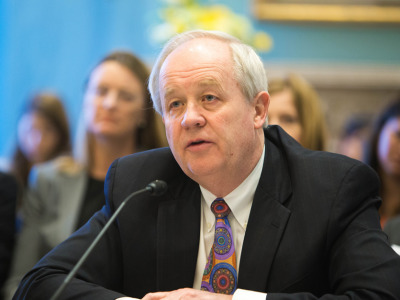
Michael Dykes, IDFA
That new style of working together Dykes mentions? It’s also necessary because farm bills aren’t getting any easier to pass. The increasing urban-rural divide is leaving fewer Democrats with an interest in farm policy and fewer Republicans with an interest in boosting nutrition programs.
On top of that, the Trump administration’s trade efforts brought about the Market Facilitation Program, which offered direct payments to producers based on production in 2018 and based on assessed trade war impact in 2019. For dairy, there was also purchase of surplus commodities to donate in food banks.
MFP was funded out of the Commodity Credit Corporation, a fund that didn’t have a lot of exposure before MFP brought it to the spotlight. Peterson says long term, that might be an issue.
"The Freedom Caucus never knew about the CCC. So they come up and ask me, and I can’t lie to them, I say ‘Well, this is what it is, it’s been there since ‘48 or whatever, and they said ‘Really, where’s the money come from?’ Well I said it was ostensibly from tariffs and whatever, but the reality is money is borrowed. It’s just added to the deficit is what it is. They said ‘Really?’ You could see Jim Jordan’s wheels turning, so they’re going to go after this.
On the liberal side, they didn’t know about it either. And they’re upset because the money’s going to big farmers, it’s not going to little farmers. So their knives are out, so you’ve that going on.
With farmers, I’ve got probably 100 guys in my district that probably got $500,000 this year. There’s no way we can match that on the committee, we don’t have any money."
The program did its part and cushioned the blow of the trade war, but Peterson says it’s going to make the next farm bill more of a challenge.
Peterson: I think this next farm bill is going to be nigh on impossible to do.
Chase: To be fair though, I was interning out here in the summer of 2013 …
Peterson: ... that’s what I said then, right?
Chase: And I think I heard you say that then too.
Peterson: Well I’ve said it more than once, but I think I’m right this time. It’s because of these facilitation payments and all the stuff that’s gone on and how partisan this place has become. I can tell you for a fact if I wouldn’t have been chairman, or not chairman, but ranking member of the ag committee last year, we wouldn’t have got done. Nobody else would have been able to do this and get our side to where we needed to be and get it done.
Is that an astute assessment of the current political state of play or an elected official being very confident in their legislative prowess? Ask us again in 2023.
But it isn’t just Peterson that has an eye out for the future of the farm bill. Dykes notes it will be critical for every sector in the dairy industry on a policy front to work together in order to better connect with the consumer in the future. He feels though, future farm bills will look a lot different than they do today.
“Consumers want food with a story and food is more than just something to keep you alive with. There are values implicit in purchases of food. The values of the companies processing the food and putting the food on for consumers. Consumers will not necessarily be getting it on the shelf. They’ll be getting it delivered to their doorways — e-commerce and the whole way food is delivered. I think the next farm bill will continue as others have with probably more and more devoted to the food side and the consumer side of it than there has been on the food production side of that.
Those involved in the minutia of farm policy have seen the farm bill pie chart with its sizable wedge of nutrition funding and smaller portions of farm program spending. Nutrition programs like SNAP and WIC are growing percentages of the pie.
We’ve talked quite a bit about dairy and its farm bill policies, but there’s also a host of other issues that have the industry’s attention. There’s farmworker issues on Capitol Hill and at the Department of Labor, trade policy at the White House and abroad, and one of the industry’s longest-running challenges: Standards of identity.
One of the easiest ways to fire up a dairy lobbyist: ask them about the term almond milk.
KNOW IDEAS MEDIA may have been able to put a funny spin on the Nut milking EXPOSED parody video, but the industry has been in a long-running battle to keep plant-based alternatives from using traditional dairy nomenclature. Gary Boyke, a dairy producer from Fond du Lac, Wisconsin says he worried about milk labeling becoming a problem decades ago.
"Why do we want to buy our so-called milk that is made in a factory that has three or four almonds in it for flavoring? I thought about that possibility forty years ago when I jumped into this business and it took forty years. I am very disappointed now."
But plant-based food advocates argue consumers are not confused, and current labels are clear. They also argue changing labels would be very costly. However, progress on milk labeling might finally be making some headway.
Capitol Hill lobbyist Micheal Torrey, has been working on dairy and other farm policy matters for years. Full disclosure: Torrey and his firm handle government affairs issues for Edge, the sponsor of this podcast. Torrey says dairy products and plant-based alternatives need to be treated differently.
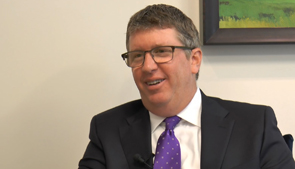
Michael Torrey, Michael Torrey Associates
“There are standards of identity that I think have been very challenging for the dairy farmer and dairy processor to reach the consumer. That system has to be updated. It’s just outdated. It’s allowed others to come in and compete and they are not on a level playing field when they do so and that’s impacting the farmer’s bottom line.”
However, he does credit the Food and Drug Administration for looking at the standards of identity. The battle between what should be called milk and what shouldn’t has long been a problem for the industry. On Jan. 23, several dairy state senators sent a letter to the Food and Drug Administration on how nondairy terms should be defined.
“Impostor products should no longer be able to get away with violating law and taking advantage of dairy’s good name,” Agri-Pulse's Jeff Nalley reported for our Daybreak podcast, "says the letter, which was led by Democrat Tammy Baldwin of Wisconsin and Republican Jim Risch of Idaho.”
"They’ve had petitions in front of them for 20 years that they have not been able to address" Torrey said. "We had an FDA Commissioner Scott Gottlieb who acknowledged that maybe there was an issue. He has since left. But they did have a listening session talking about the standards of identity. My understanding is there are about 280 standards to address but certainly one of those they will likely break out and deal with separately, hopefully will be on the plant-based versus milk and our hope is that they actually do something."
But they’ve been hoping for that for quite a while. New FDA Commissioner Stephen Hahn was sworn in in December and has yet to telegraph how he’ll handle this issue, only saying during his confirmation process that he’s in favor of “clear, transparent and understandable labels.” But Boyke isn’t just relying on the FDA, he feels eventually consumers will figure it out.
"I think maybe the general public will get wise to what they are really putting in their bodies and they’re eating and go back to saying look, ‘our farmers are a very important part of this economy and country. Why do we want to eat a product that is not very healthy?’”
MPP, DMC, MFP, USMCA, whatever acronym you want to throw at the situation, all underscore one critical point: producers need to be profitable, and the way money flows in the dairy industry is a fascinating thing. Join us for next week’s episode as we discuss that and more on Agri-Pulse Deep Dive sponsored by Edge Dairy Farmer Cooperative, the voice of milk. For Spencer Chase, I’m Ben Nuelle.
For more news, go to www.Agri-Pulse.com.


